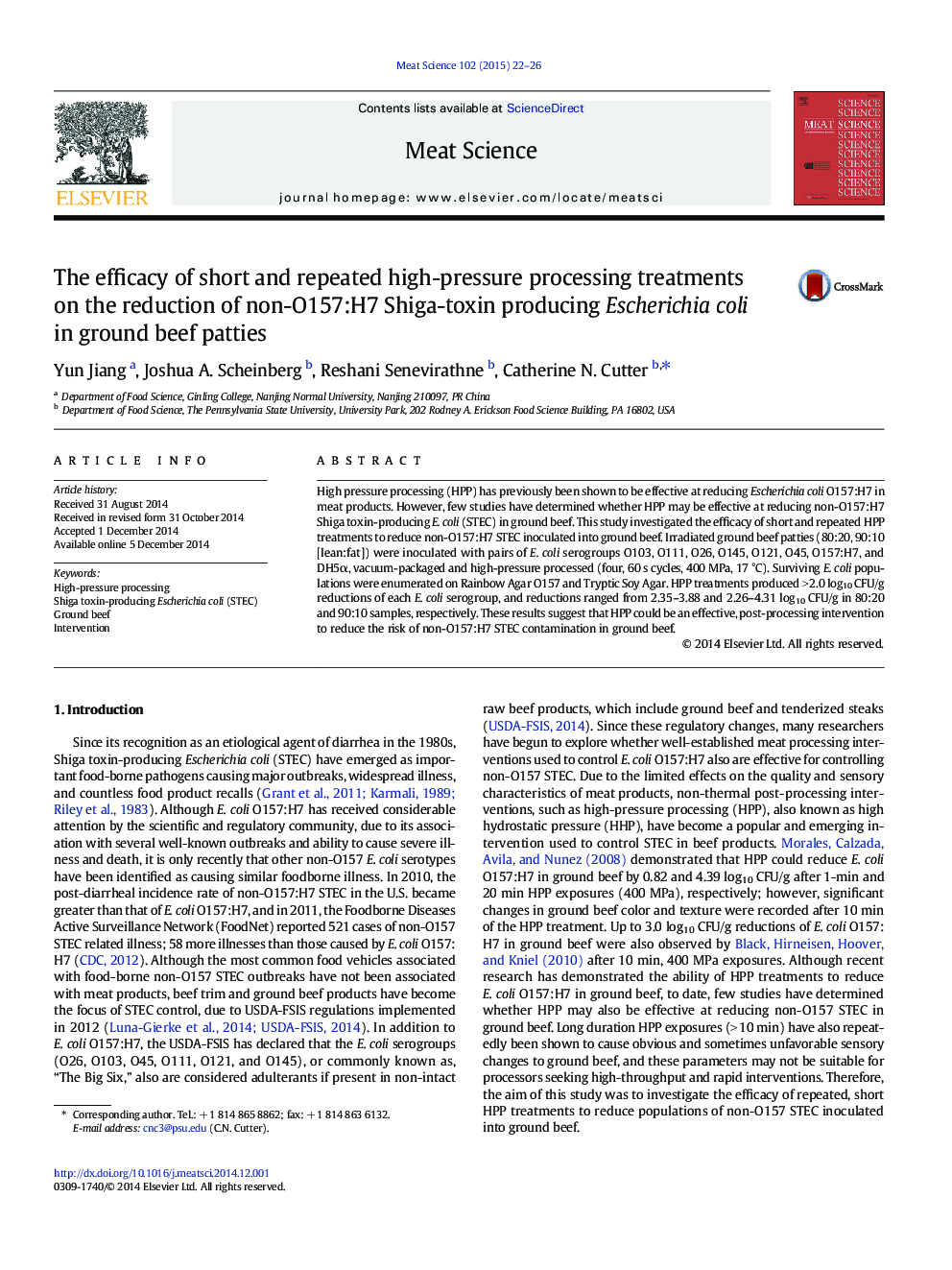| Article ID | Journal | Published Year | Pages | File Type |
|---|---|---|---|---|
| 2449698 | Meat Science | 2015 | 5 Pages |
•Short, repeated HPP cycles were evaluated to reduce non-O157:H7 STEC in ground beef.•STEC were reduced > 2 log10 CFU/g in 80:20 or 90:10 ground beef samples with HPP.•HPP could be an effective intervention to reduce non-O157:H7 STEC in ground beef.
High pressure processing (HPP) has previously been shown to be effective at reducing Escherichia coli O157:H7 in meat products. However, few studies have determined whether HPP may be effective at reducing non-O157:H7 Shiga toxin-producing E. coli (STEC) in ground beef. This study investigated the efficacy of short and repeated HPP treatments to reduce non-O157:H7 STEC inoculated into ground beef. Irradiated ground beef patties (80:20, 90:10 [lean:fat]) were inoculated with pairs of E. coli serogroups O103, O111, O26, O145, O121, O45, O157:H7, and DH5α, vacuum-packaged and high-pressure processed (four, 60 s cycles, 400 MPa, 17 °C). Surviving E. coli populations were enumerated on Rainbow Agar O157 and Tryptic Soy Agar. HPP treatments produced > 2.0 log10 CFU/g reductions of each E. coli serogroup, and reductions ranged from 2.35–3.88 and 2.26–4.31 log10 CFU/g in 80:20 and 90:10 samples, respectively. These results suggest that HPP could be an effective, post-processing intervention to reduce the risk of non-O157:H7 STEC contamination in ground beef.
